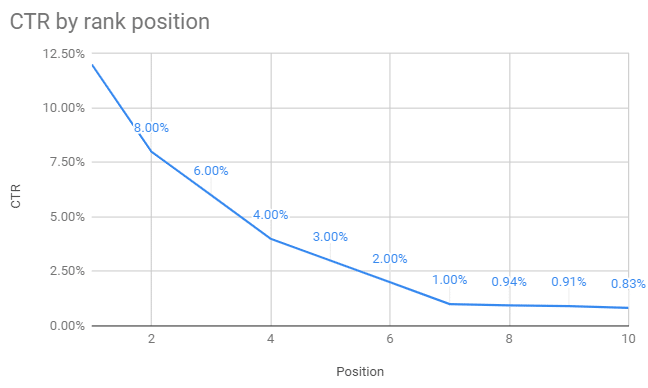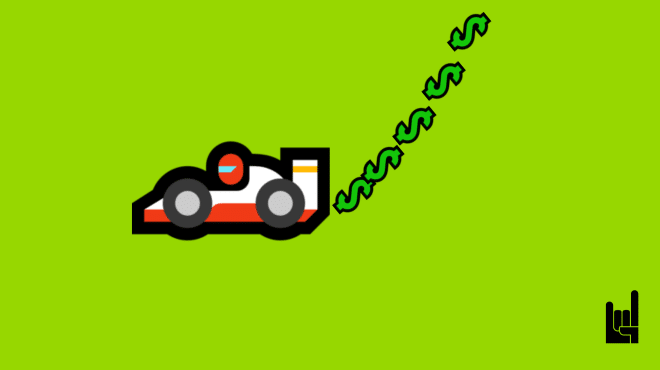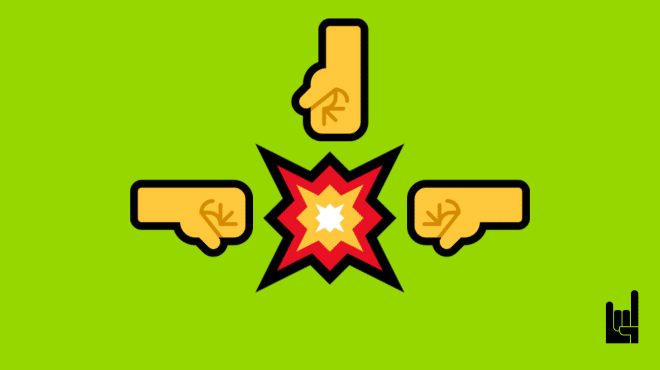A CTR curve is a line graph depicting the average CTR for each position in Google search results. In the example above, you can see that the average organic CTR for position one is 12%. Having a CTR curve allows SEOs to better predict how much traffic they can get from a particular keyword ranking
No. You could calculate the current CTR by getting the traffic you get by the position that keyword has vs the total volumes of that keyword and then you can get your CTR but you cannot tell what the traffic would be if you would be in a lower position. Only, If you keep historical data that would be possible.
Again no. But a safe average for your estimations is the one below
Based on an analysis performed by Backlinko here are some interesting findings:
1. The #1 result in Google’s organic search results has an average CTR of 27.6%.
2. The #1 organic result is 10x more likely to receive a click compared to a page in the #10 spot.
3. Organic CTR for positions 8-10 is virtually the same. Therefore moving up a few spots on the bottom of the first page may not result in more organic traffic.
4. On average, moving up 1 spot in the search results will increase CTR by 2.8%. However, this depends on where you’re moving from and to. Moving from position #3 to position #2 will usually result in a significant CTR boost. However, moving from #10 to #9 doesn’t make a statistically significant difference.
5. Titles that do and do not contain a question have similar CTRs.
6. Title tags between 40 to 60 characters have the highest CTR. According to our data, pages with a title tag length between 40 and 60 characters have a TK% higher CTR compared to those that are outside of that range.
7. Longer keywords tend to have a higher CTR: keywords between 10-15 words in length get 1.76x more clicks than single-word terms.
8. URLs that contain terms similar to a keyword have a 45% higher click-through rate compared to URLs that don’t contain a keyword.
9. Positive titles may improve your CTR. We found that titles with a positive sentiment improved CTR by approximately 4%.


